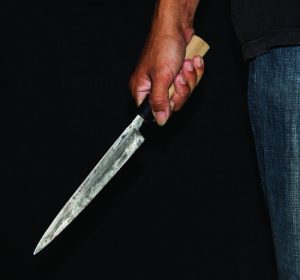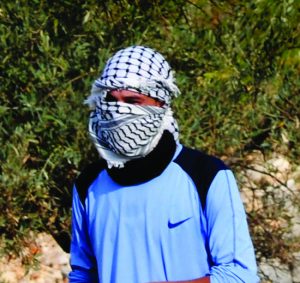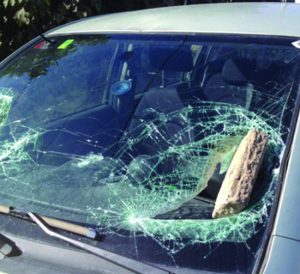×


We have detected your country as:
Please click here to go to the USA website or select another country from the dropdown list.
by: Rev. Cheryl Hauer, Associate Editor
From September 2015 to the writing of this article in April 2016, 34 people have been killed across the nation of Israel in what some are calling “random acts of terror.” Another 413 have been wounded, some seriously, including four Palestinians who were mistaken for Israelis. There have been 213 stabbing attacks, 83 shootings and 42 vehicular rammings. Add to that the occasional Molotov cocktail and dozens of rock throwing incidents, and the number of attacks well exceeds a thousand. It has been called the knife intifada, the youth intifada, the stabbing intifada, the Al Quds (Arabic name for Jerusalem) intifada and the spontaneous intifada. Whatever you call it, the fingerprints of Palestinian leadership are all over it.
Those leaders have attempted to portray the current wave of violence as a kind of popular, spontaneous struggle, not an intifada per se, but an expression of the Palestinian people’s frustration and despair over the current political situation. But at a conference held in Beirut in November 2015, Fatah and Hamas leaders joined forces to support what they called the next step in the Palestinian revolution. That revolution, they declared, will only end with the total collapse of the Zionist entity.

(Thirdparty/shutterstock.com)
Calling it the knife intifada, Hamas Political Bureau member Mousa Abu Marzook referred to the current violence as a very effective instrument for achieving political objectives. The first intifada resulted in the Oslo Accords, he posited, while the second precipitated Israeli withdrawal from Gaza. A side benefit, in his opinion, was the creation of the security fence which, “despite its drawbacks, symbolizes the end of the Zionist endeavor.”
Marzook is convinced that the current intifada will have positive results as well. Maintaining the current level of violence, or stepping it up if need be, will force Israel to withdraw from Judea and Samaria. Palestinian leadership will leverage it to secure the freedom of Palestinian prisoners and force Israel to lift the blockade of Gaza, he says.
In the closing declaration of the conference, the leaders dubbed the current situation the “liberation intifada,” and reiterated their commitment to support every form of violence in the move to destroy the nation of Israel.
Similar but Different
In many ways, the pattern of this intifada is simply a replay of what Israel has seen before. The Palestinian strategy is to confirm approval for violence and acts of terror which is then translated into action on the street. The violence is fueled by incitement, through religious leaders, political speeches, schools and particularly in this case, social media. The leadership also guarantees social and financial support to those Palestinians who are arrested or wounded in the course of their terrorist activities, including a monthly stipend for their families.
This intifada also capitalizes on the same issues that have fueled past waves of violence. Although there is absolutely no evidence to support the claim, Palestinians are convinced that Al Quds is somehow at risk. The belief that Israel is about to take over the Temple Mount and destroy Muslim holy sites has been central to this intifada as it has in past conflicts, a paranoia that is perpetuated by those who desire to keep the flames of terrorism alive.
But there are differences this time. In the past, terrorists worked in groups and their activities were organized. This meant that intelligence could be gathered and attacks thwarted. This time, the attacks are carried out in a seemingly random fashion, often with only one or two individuals involved, making intelligence gathering and deterrence very difficult. In the past, offensive military action could be effective as terror cells were uncovered and targeted. However, in the current situation, it’s not a viable option.

(IDFblog.com)
Another difference has to do with the operatives themselves. This time Israel is dealing with a much younger demographic, 50% of them under 20, with a significant number of young women. It is apparent that the years of incitement to terror and hatred have finally reached the pinnacle of success. In previous years, Palestinians were willing to make the sacrifice of surrendering their lives for the greater cause. Parents were proud of that sacrifice, and were rewarded for it as well. In the current climate, these child-terrorists are not just willing to die, they want to die. No longer are we dealing with those to whom the cause is significant enough to warrant death and the reward in the afterlife an incentive. Today, death itself is the raison d’être. Social media networks and mainstream Arab media have helped to create a culture of death-worship, lauding each perpetrator as a hero and creating a model for emulation. Other young people are thereby empowered to grab scissors or knife and kill, not so much for a cause as a means to fame.
World Opinion Shifting in Israel’s Favor?
It has been the hope of the Palestinian leadership that Israel would deem the cost of fighting this intifada just too high in terms of domestic morale as well as international opinion. The ongoing battle would create significant tension between Israel and the United States and Europe, weakening Israel’s already tenuous position in the global community. With the right propaganda, the world could be convinced to identify with the plight of the Palestinian people. As more and more child-terrorists were killed, Israel would have no support remaining in the arena of public opinion. Eventually, they would have no alternative but to capitulate.

A rock attack in Jerusalem
(IDFblog.com)
However, the Palestinian plan may have backfired, at least in the short term. Although terror still continues, March saw a sharp decrease in the number of incidents, at least of stabbings and vehicular ramming. As terror spreads its ugly presence around the globe, nations are suddenly aware of the horrendous issues that Israel has dealt with on a constant basis for decades. Suddenly, Israel is seen as the victim and not the perpetrator. And through it all, Israelis are finding recognition as those whose history has forced them to become experts in dealing with terror.
For now, a tenuous hope is in the air in Israel. For now.
All logos and trademarks in this site are property of their respective owner. All other materials are property of Bridges for Peace. Copyright © 2024.
Website Site Design by J-Town Internet Services Ltd. - Based in Jerusalem and Serving the World.